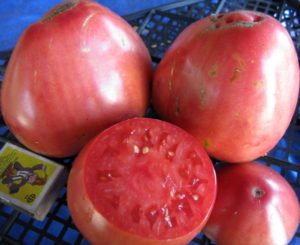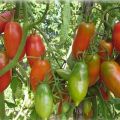Characteristics and description of the tomato variety Lazyka, its yield
Among gardeners there are many fans of the Siberian Garden agrofirm; many successful large-fruited varieties of Siberian selection are grown not only in Siberia, but also in the Moscow region. Tomato Lazy is another successful work of Siberian breeders.
In temperate climates, this variety can be grown outdoors. In areas with short summers and frosts on the soil at the end of May, Lazy Tomatoes should be grown under a temporary shelter or in a greenhouse.
Description
By the time of ripening, the variety of tomatoes is lazy early. The growing season lasts from 95 to 100 days. Already at the end of June, you can remove the first fruits if you plant seedlings in a polycarbonate greenhouse in April.
The plant is undersized with compact, weakly branching bushes up to 60 cm high. Lazy is a determinant, standard variety, which does not need to remove stepchildren above the first brush.
The description of the variety from the manufacturer guarantees resistance to a number of diseases:
- late blight;
- macrosporosis.
Thanks to good immunity, absence of diseases, the yield is guaranteed to be high. One bush gives 4 kg of fruit. From 1 sq. m of the ridge, up to 20 kg of tomatoes are removed with the recommended planting scheme - 6 plants per 1 sq. m.
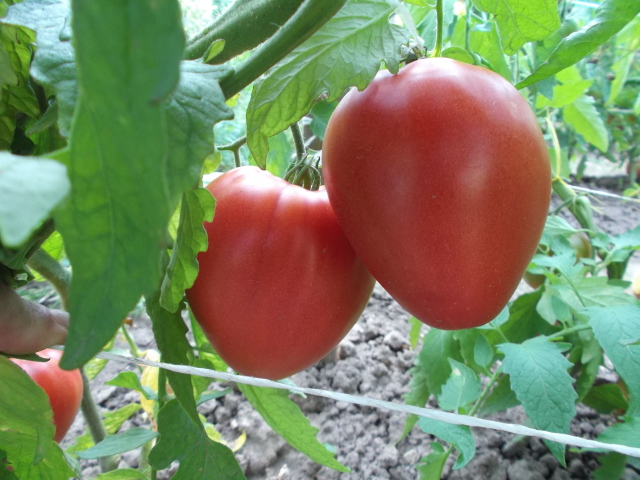
Fruit
Fruits are large, weighing up to 300 g, individual specimens up to 500 g. Fruit shape is heart-shaped. The skin is smooth, bright red or raspberry red. Medium density pulp. The characteristic of taste is high, despite the presence of a slight acidity.
Tomatoes are perfectly stored, they can be picked green, when ripening they acquire color and taste. Universal use:
- salads;
- juices;
- tomato paste;
- ketchup.
Advantages and disadvantages
A large-fruited tomato variety has all the advantages of a high-quality early tomato:
- strong immunity;
- high productivity;
- lingering, tasty fruits of a beautiful shape;
- transportability;
- the bush does not require formation;
- friendly formation of fruits;
- tolerates nighttime temperature drops in spring.
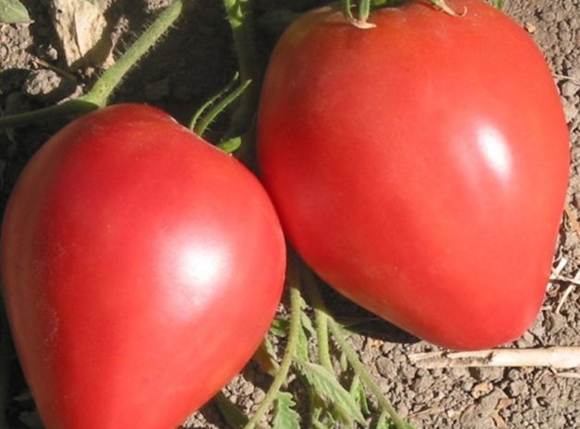
The description of the lazy tomato will be incomplete if you do not list the problems that arise when growing the Lazy:
- The need for strong support and a garter for the hands.
- Reduced yields in hot, dry summers.
- For the formation of high yields, a fertile, loose soil with neutral acidity is needed.
We sow seeds for seedlings
We cook low (10-15 cm) boxes for seedlings. We fill them with purchased (it is more reliable) soil, water. Preparing seeds for planting. First, we sort. Soak large seeds without defects for 15 minutes in a manganese solution, discard small and damaged seeds.
We make shallow grooves, lay out the seeds. Scheme - 7 cm * 4 cm.We fall asleep with humus mixed with earth, a layer of 1.5 cm. You will need a cling film. It is convenient for her to close the seedling box, she transmits light, retains the necessary moisture in the soil.
25 ° C is the optimum air temperature in the room where the seedlings are. When seedlings appear, reduce the temperature to 18 ° C. Seedlings dive when two true leaves are formed.
After 50 days, the seedlings can be hardened. At 55 days of age, she is ready for a transplant. If you grow Lazy in a greenhouse, you can plant seedlings after 45 days. Tempered on the balcony, outside or open the window at night. Night temperature for hardening seedlings is 8 ° C.
Planting and care features
Prepare the ground a week before planting. Only on light, loose soil can a rich harvest be grown. Therefore, add humus, sand, ash for digging. In addition, apply mineral fertilizers:
- Ammonium nitrate.
- Superphosphate.
- Potassium nitrate.
Observe the fertilizer dosage indicated on the package.
Landing scheme
Each variety, due to its characteristics, requires compliance with a specific scheme when forming planting holes. Since the Lazy-eyed variety is undersized and the tomato bushes are compact, 1 sq. m can accommodate up to 6 plants.
It is better to drive the supporting pegs before planting the seedlings, the roots of the seedlings will be more intact. Transplant seedlings from cups into holes, cover roots with earth, water. For better root formation use "Kornevin". Prepare the solution according to the instructions.
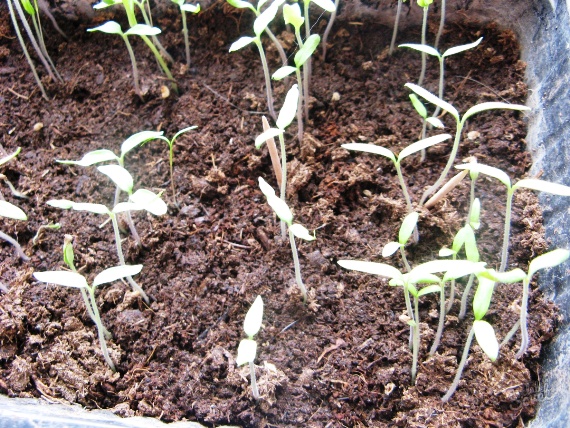
Top dressing
Feed the tomato with fertilizers twice a season. The first time is two weeks after the transplant. You can prepare a solution of urea (1 tablespoon per 10 liters of water). If categorically against chemistry, then the herb infusion. The second root dressing should be carried out during flowering or ovary formation.
Reference. Nitrogen fertilizers are not used in the second half of summer. They lead to excessive formation of green mass and delayed fruiting.
Watering
For 10 days after planting, you can not water the tomatoes. Until the plant has taken root, the moisture consumption is low. In the future, water abundantly once a week in cloudy weather, 2 - in hot weather.
Reviews
Tatiana, Novosibirsk
I always buy seeds of Siberian selection. I learned about the variety by reading reviews on the Internet. I liked that there was no need to pinch the bushes. Grown in open ground, at first under arcs. The variety pleased with its good yield and fruit taste.
Ekaterina, Tambov
I liked the name and photo on the package. There is little time for care: children, work, summer vacations. The tomato harvest was good, despite my rare visit to the dacha. The appearance of the grown fruits and the description on the package matched.

Galina, Tver
I planted this variety for the first time, I did not regret it. The land in the country is good, the bushes have grown strong. The tomatoes formed amicably, I had to tie up the brushes so that the branches would not break. The taste for early tomatoes is decent.

